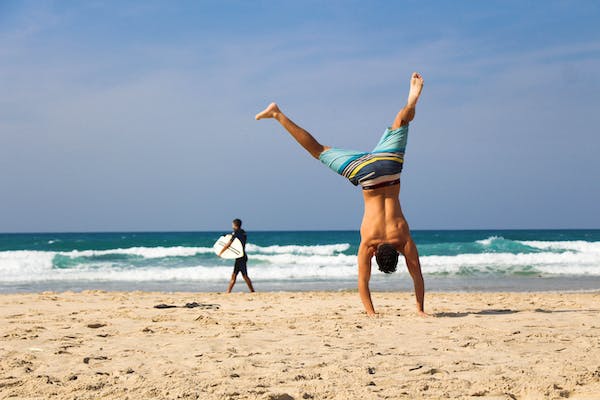.jpeg)
Training Advice for Senior Athletes
Baby boomers, who previously drove the expansion of the fitness sector in their youth, are now drawn to fitness-related pursuits in their senior years, including physical competition. Large growth in the number of master's and senior athletes could be caused by the growing 65+ population, rising life expectancy, shifting attitudes toward senior fitness, and vigorous encouragement of older individuals' engagement in sports. In reality, elderly athletes' involvement in sporting competitions seems to be increasing. For instance, the National Senior Games feature more than 10,000 participants who compete in over 20 different sports, such as track and field, swimming, pickleball, tennis, basketball, archery, softball, cycling, triathlon, and volleyball, every other year.
Naturally, this creates a big potential for fitness and health professionals who want to work with this group of people. Continue reading to find out more about some of this population's special traits and what you should know to create secure training programmes that assist them in achieving their competitive objectives.
Testing Senior Athletes
Many of the fitness tests traditionally used for older persons are designed for a population with lower functioning and have ceiling effects, which happen when the test fails to detect increases in a parameter. Sadly, some common athletic or fitness tests, such the 40-yard sprint or vertical jump, may not be suited for all seniors and may show floor effects, which makes it difficult to detect changes in a parameter.
The Senior Athlete Fitness Exam (SAFE), which was created and validated by Dr. Becca Jordre of the University of South Dakota, aims to solve these problems. She has been gathering information on competitors at the National Senior Games for several years.. The SAFE consists of examinations in five categories:
- Strength (five times sit to stand; handgrip dynamometry) (five times sit to stand; handgrip dynamometry)
- Balance (one-legged posture, eyes open on foam, eyes closed, open)
- Walk rate (usual and fast)
- Flexibility (shoulder, hip, ankle) (shoulder, hip, ankle)
- Posture
Her study has provided various new perspectives on ageing athletes. For instance, compared to the overall adult population in their age group, senior athletes show much lower levels of cardiovascular disease, diabetes, melancholy, and anxiety. They exhibit higher levels of fitness overall than non-athletes as well (Jordre et al., 2016). Take a look at these results:
- Senior athletes 90 to 99 years old have stronger legs than non-athletes 60 to 69 years old.
- Compared to 30% of neighbourhood residents, athletes report experiencing a fall just 10% of the time.
- Senior athletes walk with a gait pace comparable to that of individuals in their thirties.
- Senior athletes have much more shoulder flexibility than non-athletes, and this flexibility diminishes far more slowly.
- Compared to non-athletes, senior athletes had a more upright posture.
Compared to their less active counterparts, senior athletes normally perform at considerably better levels, but they can still have deficits in one or more areas that are usually unique to their sport and training regimen. For instance, Dr. Jordre discovered that archers outperformed swimmers, who excelled in shoulder flexion more than any other sport, in gait speed and balance. The explanation for the gait speed and balance results is likely due to how quickly archers must go from one station to the next during competition, walking nearly a mile in increments of 40 to 60 yards. The researchers also discovered that when compared to other male sports, male swimmers exhibit noticeably higher levels of osteoporosis. Given that the time spent in the pool could be regarded as a period of "de-loading" on the bones, this is not surprising.
Training Tips
Senior athletes should be encouraged to train in activities other than their favoured sports or activities because they frequently excel in areas unique to their sports. The athlete should be tested to identify any areas of shortfall before a customised programme uses targeted training methods to fill in those gaps. When creating a comprehensive training programme for these clients, the Functional Aging Training Model's Six Domains of Function can be a wonderful resource.
This group seems to underutilize strength training (which is similar to non-athlete populations). In tests with 2,340 senior athletes, it was discovered that they engaged in (on average) 5.5 hours of cardiorespiratory activity per week, but just one hour, or the equivalent of two 30-minute sessions, of strength training. Despite having greater levels of upper- and lower-body strength, senior athletes could benefit from increasing their weekly strength training time (which would include balance training). This is particularly relevant to sports that don't call for a lot of strength.
Senior athletes are more likely to over train and/or train too frequently without getting enough rest in between sessions. Six to seven days a week of exercise was indicated by about half of the athletes surveyed. Remind your clients that taking enough time between strenuous workouts is crucial because the amount of time needed for recuperation grows with age. Additionally, promoting recovery techniques like sufficient water, nutrition, and sleep may enhance performance and lower the chance of injury.






